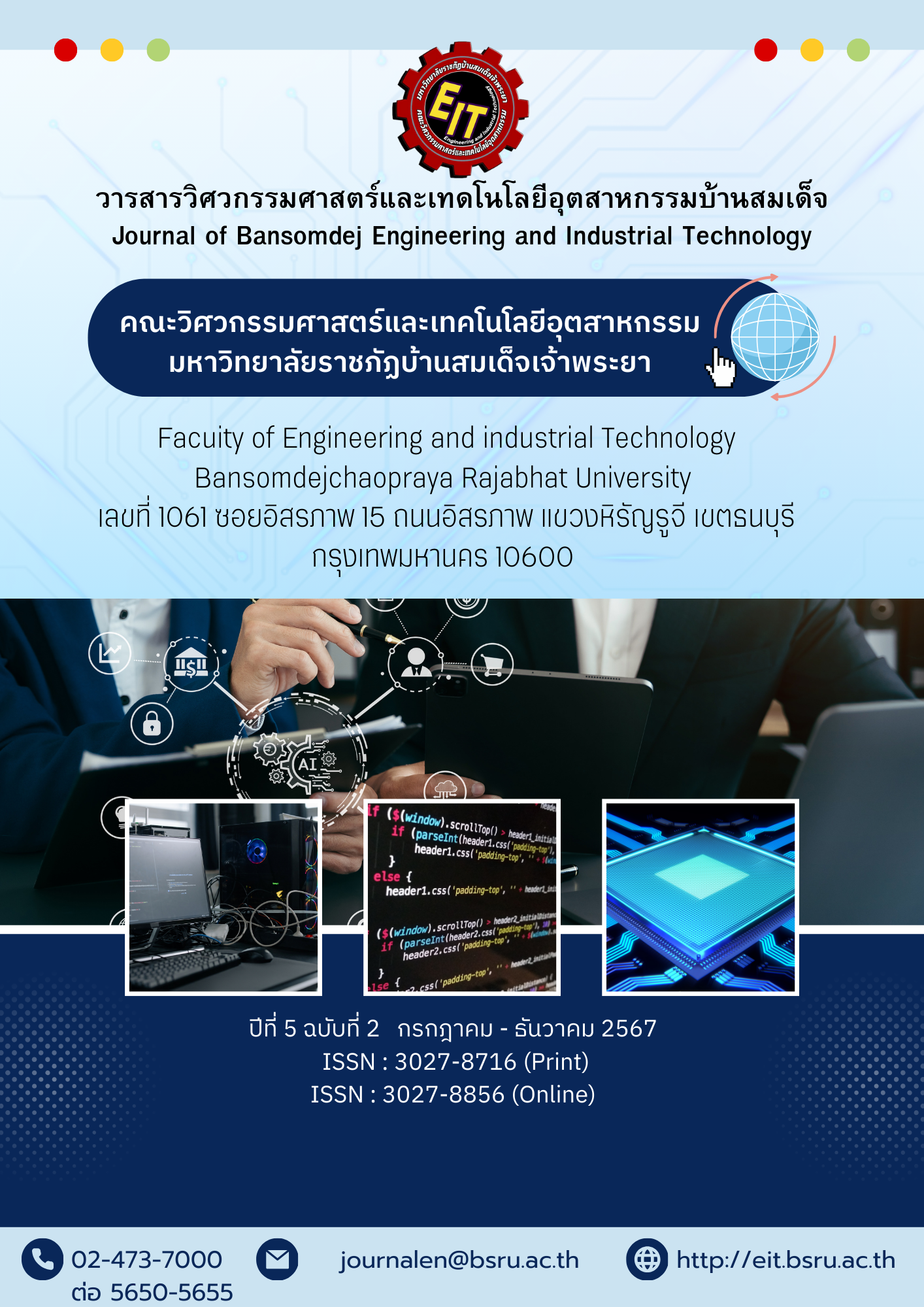Waste Reduction in Wooden Furniture Manufacturing to Enhance Logistics Efficiency Using Design of Experiments
Main Article Content
Abstract
This study aims to 1) investigate the effects of wood type, wood
thickness, and cutting speed on the defect rate in the production process of
wooden furniture, and 2) determine the optimal cutting speed and wood
thickness to minimize the defect rate for each type of wood. Prior to
improvement, the average defect rate was 8. 37%, corresponding to a loss of
26,080 THB per month. The analysis utilized the General Linear Model ( GLM)
and Analysis of Variance ( ANOVA) to evaluate the effects of the three factors.
The results indicated that all factors significantly influenced the defect rate. The
optimal parameters identified were a cutting speed of 75 revolutions per minute
( RPM) and a wood thickness of 12 mm for both bagasse wood and particle
board. After implementing these improvements, the defect rate decreased to
3.52%, corresponding to a reduced loss of 9,338 THB per month, representing a
decrease of 16,742 THB or 64.19%. These findings demonstrate the efficiency of
using experimental design to reduce defects, lower storage costs, and minimize
time spent on corrective processes. Additionally, it alleviates the burden of
managing wasted resources, enhancing the logistics system's capability to meet
market demands efficiently and promptly.
Article Details
References
ธีรศักดิ์ รุ่งเรืองกิจ, & ชยานนท์ ปรีชา. (2562). การลดของเสียในกระบวนการผลิตชิ้นส่วนฉีดพลาสติกสำหรับชิ้นส่วนยานยนต์โดยใช้หลักการออกแบบการทดลอง. วารสารวิศวกรรมอุตสาหการ, 10(4), 25–33.
ปราโมทย์ จินดามณี, & กิตติศักดิ์ นาคสวัสดิ์. (2563). การวิเคราะห์ปัจจัยที่มีผลต่อระยะลึกผิวแข็ง ด้วยการออกแบบการทดลองของการบรรจุคาร์บูไรซิ่งเหล็กกล้าคาร์บอนต่ำ โดยใช้หินปูนเป็นสารกระตุ้น. วารสารวิศวกรรมและเทคโนโลยี, 8(1), 50–58.
สมเกียรติ แสงรุ่งเรือง, & วิไลลักษณ์ สุขสำราญ. (2563). การลดของเสียในกระบวนการฉีดพลาสติกของชิ้นส่วนโทรศัพท์ โดยการออกแบบการทดลอง และการประยุกต์ใช้เครื่องมือคุณภาพ. วารสารวิศวกรรมศาสตร์, 28(2), 112–120.
สุวัฒน์ กิจพิพิธ. (2564). การลดของเสียในกระบวนการชุบโครเมี่ยมด้วยวิธีการออกแบบการทดลองเชิงวิศวกรรม. วารสารวิทยาศาสตร์และเทคโนโลยี, 29(3), 163–173.
Ding, Y., Wang, J., & Zhang, X. (2023). Design of experiments and machine learning with application to industrial processes. Statistical Papers, 64(2), 349–367.
Mohan, S., Verma, P., & Singh, R. K. (2023). Optimization of a commercial injection-moulded component by using DOE and simulation. Journal of Manufacturing Processes, 85, 305–313.


